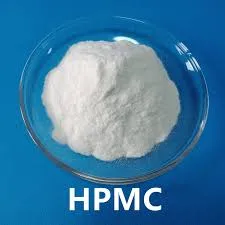
Nov . 07, 2024 19:43 Back to list
Exploring the Versatility and Applications of RDP Polymers in Modern Industries
Exploring RDP Polymer Composition, Applications, and Future Trends
RDP polymer, or Redispersible Polymer Powder, has gained significant attention in recent years due to its unique properties and diverse application range. As a type of synthetic polymer that can be redispersed in water after being dried, RDP plays a crucial role in various industries, particularly in construction, coatings, and adhesives. This article delves into the composition, applications, and future trends of RDP polymers.
Composition of RDP Polymer
RDP polymers are typically composed of various synthetic resins, including vinyl acetate, ethylene, and acrylics, which are chosen based on the desired performance characteristics. The drying process involves transforming these polymers into a powder form, allowing for a stable reconstitution in water when mixed. RDPs are often combined with additives such as stabilizers, surfactants, and fillers to enhance their performance properties, including adhesion, flexibility, and water resistance.
The primary advantage of RDPs lies in their ability to maintain performance characteristics after rehydration, which is pivotal in the construction industry. When mixed with other materials, such as cement, gypsum, or lime, RDPs provide improved adhesion, flexibility, and impact resistance. This versatility makes them indispensable in formulations for dry mortars, tile adhesives, and plaster.
Applications of RDP Polymer
The applications of RDP polymer are vast and varied, with significant usage in construction, paints, and coatings
1. Construction Industry RDP is extensively used in dry mix mortars for applications such as tile adhesives, facade adhesives, and interior or exterior plasters. Its ability to enhance adhesion and improve workability has revolutionized traditional construction practices. The component ensures that constructions are more durable and resistant to various environmental factors.
2. Paints and Coatings RDP polymers are essential in the formulation of emulsions for paints and coatings. They enhance the film formation properties and ensure that the end product has a smooth texture, good adhesion, and resistance to abrasion and weathering. Additionally, the redispersible nature allows for easy application and excellent finishing.
rdp polymer

3. Adhesives The adhesive industry has been transformed by the integration of RDP polymers. These polymers provide significant advantages in terms of bonding strength and flexibility. They are used in applications ranging from wood and construction adhesives to packaging and specialty adhesives.
4. Textile and Paper Industries In textiles, RDP is used as a binder for non-woven fabrics, enhancing their properties and durability. In the paper industry, it serves as a coating for paper products, improving their strength and printability.
Future Trends in RDP Polymer Development
As sustainability becomes a central focus across various industries, the future of RDP polymers is poised for innovation. There is a growing demand for eco-friendly and low-VOC (volatile organic compounds) alternatives that maintain high performance. Manufacturers are investing in the development of bio-based RDP polymers derived from renewable resources, aligning with global sustainability goals.
Additionally, advancements in nanotechnology are paving the way for RDP polymers with enhanced performance characteristics. The integration of nanomaterials can improve various properties, such as thermal stability, mechanical strength, and barrier properties, making RDPs even more versatile in applications.
Moreover, the increasing demand for smart coatings and adaptive materials is likely to drive research into RDP polymers with integrated functionalities, such as self-healing or environmental responsiveness.
Conclusion
RDP polymers have established themselves as essential components in numerous applications, particularly within the construction and coatings industries. Their unique properties offer enhanced performance that is critical for modern construction practices and product formulations. As the industry moves towards more sustainable solutions, the potential for RDP polymers to evolve in line with technological advancements and eco-friendly practices is immense. The future promises exciting developments that will likely redefine the capabilities and applications of RDP polymers in various fields.
-
Versatile Hpmc Uses in Different Industries
NewsJun.19,2025
-
Redispersible Powder's Role in Enhancing Durability of Construction Products
NewsJun.19,2025
-
Hydroxyethyl Cellulose Applications Driving Green Industrial Processes
NewsJun.19,2025
-
Exploring Different Redispersible Polymer Powder
NewsJun.19,2025
-
Choosing the Right Mortar Bonding Agent
NewsJun.19,2025
-
Applications and Significance of China Hpmc in Modern Industries
NewsJun.19,2025







